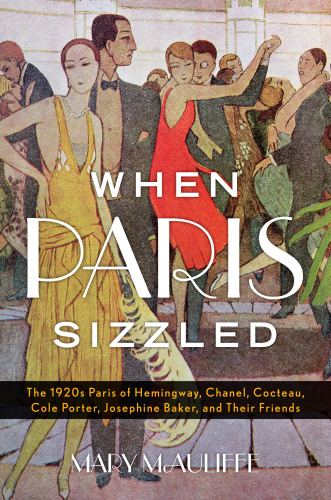
When Paris Sizzled
The 1920s Paris of Hemingway, Chanel, Cocteau, Cole Porter, Josephine Baker, and Their Friends
کتاب های مرتبط
- اطلاعات
- نقد و بررسی
- دیدگاه کاربران
نقد و بررسی

July 4, 2016
McAuliffe follows Dawn of the Belle Epoque with another breezy, brisk, well-researched work about Paris, this time focusing on the dazzling figures populating the once-denigrated Paris neighborhood of Montparnasse at its mesmerizing peak. “The Lost Generation” of expat writers and artists helped transform Montparnasse into a culturally rich, tumultuous community where the luminous and daring Josephine Baker danced, Gertrude Stein kvetched about James Joyce, and the taxi horns provided inspiration for George Gershwin. Not surprisingly, the area’s notoriety only grew with the proliferation of the expats and artists’ casual and often rash affairs, drug use (especially Jean Cocteau’s opium addiction), and other self-indulgent behaviors aided by reckless spending. Weaving in key advancements in cultural production (music, architecture, theater, film) and technological evolution in the automobile industry, McAuliffe smartly keeps her eye on political events in Paris as well as in central Europe, especially the increasing popularity of far-right movements and Charles de Gaulle’s rise in the French military. McAuliffe recreates a lush, gorgeous world filled with talented, yet immensely flawed innovators who experienced les années folles (“the crazy years”) as a rare escape into creativity, glamor, and respite from the sobering reality of a world prone to devastating wars. Illus.

June 15, 2016
A vivid chronicle of 10 roiling years in Paris.Historian McAuliffe (Twilight of the Belle Epoque: The Paris of Picasso, Stravinsky, Proust, Renault, Marie Curie, Gertrude Stein, 2014, etc.) takes up where her last book left off, in 1918, to focus on the city's cultural life after World War I. What Americans called the Roaring '20s, the French termed les Annees folles, "the Crazy Years," which the author deems an apt epithet for the "what the hell" attitude that pervaded the city's upper class. But there was more to life in Paris than "endless parties and late-night jazz clubs." Organizing the book chronologically, McAuliffe portrays a city bursting with creativity in art, music, dance, fashion, architecture, and literature. Drawing on memoirs, biographies, and the many histories of the period, she follows an abundant and diverse cast of characters, creating brief vignettes about the yearly evolution of their lives and careers. Besides the usual suspects found in any history of the Lost Generation--Hemingway, Fitzgerald, Stein, Picasso, Pound, Man Ray, Kiki of Montparnasse, and Cocteau, to name a few--the author includes politicians (de Gaulle, Clemenceau, Petain) and innovators in fields other than the arts, such as cosmetics manufacturers Helena Rubinstein and Francois Coty; architect Charles Jeanneret, who became famous as Le Corbusier; Marie Curie; couturiers Paul Poiret and, of course, Coco Chanel; and automotive giants Renault, Peugeot, and Citroen. Andre Citroen, writes McAuliffe, was determined to be the French Henry Ford; he "was not interested in creating a plaything for the rich. He wanted to make a useful car for the middle class," the equivalent of Ford's Model T. Within a year of production, thousands of Citroens were on the road. By 1925, Citroen was the fourth-largest auto company in the world, "behind only the Americans--Ford, General Motors, and Chrysler." Fast-paced and richly detailed, the narrative nevertheless reprises many well-known stories. McAuliffe creates an expansive landscape in her examination of a transformative decade.
COPYRIGHT(2016) Kirkus Reviews, ALL RIGHTS RESERVED.

August 1, 2016
What do James Joyce, Marie Curie, Sylvia Beach, Igor Stravinsky, and Man Ray have in common? Along with those named in the title, they are among the cast of characters McAuliffe (Twilight of the Belle Epoque, 2014 ) portrays in her tour of Les annees folles, the Golden Twenties in the City of Light. She transports us to Montparnasse, populated by artists, writers, musicians, tourists, and an assortment of larger-than-life personalities whose spirit . . . flowed on a river of coffee, alcohol, and chat. Beginning with the end of WWI, McAuliffe carefully chronicles each year of that dynamic decade that saw change on so many fronts, including fashion, art, music, literature, and social behavior. She weaves together an array of stories of well-known as well as some lesser-known individuals to create a vibrant tapestry shot through with color, chaos, and creativity. Graced with period photographs and bolstered with an impressive selection of sources, When Paris Sizzled will captivate anyone who has wondered just what the Lost Generation was up to.(Reprinted with permission of Booklist, copyright 2016, American Library Association.)

























دیدگاه کاربران